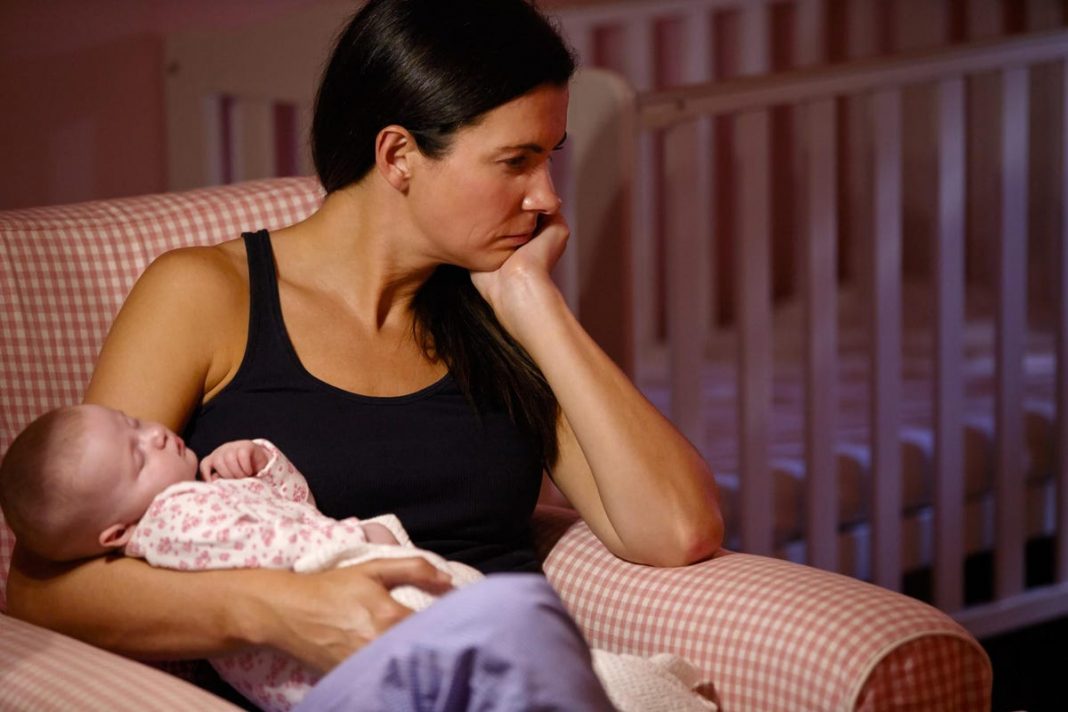Mother With Baby Suffering From Post Natal Depression
getty
Working moms are depending on the rectification of the childcare crisis, especially since the outlook for working parents is worse than what it was in 2020. Today, 56% of moms that need childcare still don’t have access to full-time, reliable care. Without question, childcare is often the second-largest monthly expense for families after their mortgage or rent payment. Below we review some of the factors causing the perfect storm that is the childcare crisis.
The Labor Shortage
Unfortunately, employment of childcare workers is projected to grow 2% from 2019 to 2029, a figure lower than the average for all occupations according to the Bureau of Labor Statistics. Childcare centers simply can’t find the staff to serve the families who desperately need care, and there is also a need to replace workers who transfer to different occupations or exit the labor force, such as to retire.
Several states– including Louisiana–conducted reports and found that they each lose over $1 billion annually in economic activity due to breakdowns in childcare. Rochelle Wilcox is the director of Wilcox Academy of Early Learning in New Orleans, Louisiana. She has recently had to close two of her centers and now has 138 children on the waitlist for this fall because she can’t find enough staff:
“My goal has always been to serve in the communities that look like me, the communities that are often marginalized, the communities that need high-quality care to unlock that golden door that is often hidden or inaccessible to them. If I’m not able to open the door for them who will?”
No available care means either the parents in Wilcox’s community can’t work or their children end up in a patchwork of unreliable care. She’s also seeing a toll on moms’ mental health: Wilcox says she’s never seen more children unbathed and under-fed coming into her center because their families are financially and mentally stretched too thin.
Economic Inequality
Oxfam is a global organization working to end the injustice of poverty. Mara Bolis is Oxfam America’s Associate Director of Women’s Economic Rights. She warns that as headlines celebrate a return to economic growth, policymakers must remain attuned to who’s being left behind.
Coincidentally, on the eve of Women’s Equality Day one group Bolis believes is being left behind: single working mothers. Many can’t afford quality childcare or predominantly hold hourly jobs with few social protections like paid leave. Single motherhood has grown so common in America that today 80% of single-parent families are headed by single mothers, and nearly 1/3 live in poverty.
“The truth is that moms have bailed out governments and businesses through their unpaid labor caring for children and other family members during this crisis at the expense of their wealth, health, and wellbeing,” Bolis said. “The truth is that we’re being taken advantage of.
Governments and employers see women’s work as dispensable and women’s unpaid labor as given.”
Delayed Federal Support
Deeper federal investments in America’s care infrastructure could provide better quality care for our country’s children, make care more affordable for single working mothers, pay care workers what they deserve, and help close the widening inequality gap for women. As a result, Senate Democrats took their first step toward passing a $3.5 trillion spending plan which includes childcare and paid leave initiatives, but more than likely Congress will not pass the bill for weeks or even months.
Lack of Information from Employers
Marshall Plan for Moms (founded by Reshma Saujani of Girls Who Code) believes a different group is responsible for the childcare crisis. In July, Marshall Plan for Moms released a solutions playbook after surveying more than 1,000 moms. Their perspective: organizations need to support moms with at minimum access to and information about affordable childcare. Greater availability of childcare can aid recruitment efforts, improve productivity and retention, and enhance corporate reputation. The playbook also suggests employers:
- provide free or subsidized on-site care, in-site care, center-based care, and/or backup care,
- negotiate discounts on behalf of employees at local childcare centers, and
- offer Flexible Spending Accounts for childcare expenses with pre-tax dollars.
Below Saujani explains that moms should not have to choose between going back into the workforce and taking care of their children because of the lack of affordable and quality childcare:
“Women are critical to our nation’s economic recovery. We need them back, but we can’t expect them to return to the workplace until employers create meaningful policy and cultural changes that champion working mothers, and that starts with childcare support.”
NEW YORK, NY – JUNE 02: Lawyer and politician Reshma Saujani speaks during the “Creative Minds … [+]
Getty Images
Most of these negative factors existed before the start of the pandemic- the state of affairs just became critical thereafter. Clear skies and calm waters aren’t anywhere in sight, but Wilcox believes once America recognizes childcare sustains our economy we’ll be headed in the right direction.
“To be clear, early learning center teachers are the most essential workers. People are not coming to work because they do not have childcare. We have to put our money where our priorities lie and our priorities should lie with our youngest, most vulnerable learners. There is no economy without early learning.”




